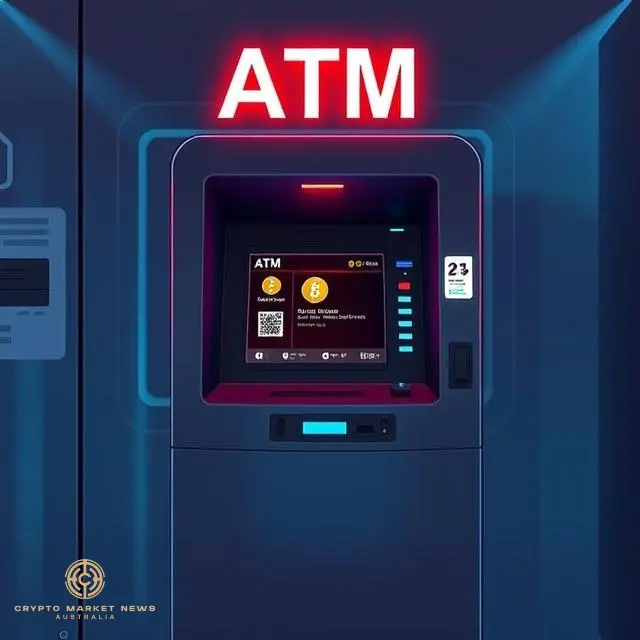In the wake of spotting worrying trends in crypto ATM compliance, AUSTRAC and it’s cryptocurrency taskforce have been working diligently to introduce new compliance rules. CEO Brendan Thomas notice over several months signs of fraud, scam, and other crypto-related elicit activity.
With that, crypto news in Australia is abuzz as AUSTRAC works with crypto ATM providers and law enforcement partners to create strategies that handle suspicious activity. Specifically, AUSTRAC is placing specific conditions on crypto ATM providers in order to reduce their exposure to terrorism financing, money laundering, and several other major financial crimes.
Comments from AUSTRAC
Thomas spoke in a recent press release and said, “the taskforce uncovered disturbing trends which have confirmed that cryptocurrency ATMs are being used for scam/fraud-related transactions. Surprisingly, the 60 to 70 age group were identified as the one of the most prolific users of crypto ATMs in Australia.”
As of now, AUSTRAC’s taskforce has obtained data from 9 different providers. The data shows that the majority of crypto ATM users are above the age of 50. Moreover, they account for nearly 72% of all transactions by value. The aforementioned 60-70 year olds made up 29% for all transactions by value.
“As part of AUSTRAC’s work to protect the financial system from criminal abuse, we’ve placed a number of conditions on crypto ATM operators, including ga $5,000 limit on cash deposits and withdrawals, enhanced customer due diligence obligations, mandatory scam warnings, and requirements for more robust transaction monitoring,” Thomas said. “The conditions are designed to help protect individuals from scams by deterring criminals from directing them to a crypto ATM, as well as to protect businesses from criminal exploitation. In light of the risks and harms we consider it absolutely necessary to ensure the sector meets minimum standards and reduces the criminal misuse of crypto ATMs.”
The Dangers of Crypto ATMs and New Requirements from AUSTRAC
One of the drawing points of crypto ATMs is that they are a very easy and convenient means of converting cash to cryptocurrency. Transactions are nearly instantaneous and are irreversible. According to AUSTRAC intelligence, criminals have been shown to use and abuse them as a means for committing fraud, scams, and money laundering.
There is one case in which a man was duped into converting nearly $200,000 in funds into cryptocurrency. That risk, especially with an older demographic so heavily involved, presents natural challenges in risk prevention.
“Our taskforce identified people aged over 50 as some of the most frequent users of crypto ATMs in Australia,” Thomas said. “This is a huge concern because, as evidence suggests, a large number of 60 to 70 year old users are victims of scam activity.”
Thomas noted that a crypto taskforce has already seen some providers failing to be compliant when it comes to counter-terrorism financing and anti-money laundering (CTF/AML) laws.
“Some of them are not taking the right steps to understand their customers and risks, or they’re not reporting to us,” said Thomas. “And with around 150,000 transactions every year moving close to $275 million, this is a serious concern.”
All of this has to do with new requirements implemented by AUSTRAC. There are three, in particular, that ATM providers must include. The first is limits of $5,000 on cash deposits and withdrawals at all crypto ATMs. The second involves enhanced customer due diligence controls, with mandatory scam warnings being the final step.
AUSTRAC has stated that they will keep close watch of current conditions, review them, and make adjustments where needed. As recently as May, AUSTRAC refused the renewal of a provider’s registration, feeling that the machines of the provider were providing unacceptable risk that could be exploited for potential criminal misuse.
Bitcoin ATMs Emerging as Major Security Threats
Across the globe, Bitcoin ATMs are becoming more commonplace. As is the case with any new trend, there are growing concerns over security and safety. ATMs that specialize in dealing Bitcoin are very similar to the ATMs we are all familiar with. Users enter their PIN and are subject to withdrawal fees, as would be the case with your average ATM.
The major difference has to do with the high-dollar value of crypto. Because of that factor, they are prime targets for fraud and hackers. Standard ATMs don’t get much in the way of interference, but their Bitcoin counterparts are starting to get a lot of attention from the wrong people.
Bitcoin ATMs, in particular, are quite susceptible to potential attacks where a hacker installs malware on a machine in order to steal funds, manipulate transactions, and capture private keys. This is quite concerning especially for ATMs that may not be subject to regular security patches or software updates.
Timothy Bates, clinical professor of cybersecurity at the University of Michigan’s College of Innovation and Technology, spoke about potential network vulnerabilities as a significant weak spot. “If the machine’s network communications are not adequately secured, attackers can intercept data transfers between the ATM and the server, leading to data theft or unauthorized access,” he said.
According to the Federal Trade Commission (FTC), scam incidents involving crypto ATMs have risen by 1,000% since 2020. The unfortunate part is that the risks are closely related to the strengths of crypto ATMs.
Bitcoin, like other cryptocurrencies, is decentralized, immutable, and permission-less. Transactions can’t be reversed or recalled even if funds go to the wrong address. That lack of governance can be a major challenge. In Australia, AUSTRAC is the governing body attempting to keep crypto ATM vendors in line.
Another major downside of these security issues is that personal information can be compromised. Government identification numbers, birth dates, and more could be potentially at risk should a crypto ATM become compromised.
For now, it is a new challenge that will require time, experience, and dedication to curb. It will be on developers as well to create the kind of measures that not only prevent but deter potential fraud.
ATM Users Should Exercise Caution
The tough part for users is that there aren’t many ways to protect against these issues. Users should be skeptical and cautious of any request made of them to pay through a Bitcoin ATM. The vast majority of legitimate businesses won’t demand payment made via crypto ATM.
It is important for users to verify the legitimacy and ownership of the Bitcoin ATMs. Alice Frei, head of security and compliance at blockchain communications & consulting agency Outset PR, said that users can take certain steps to protect themselves.
“You can verify the recipient address by checking for flagged activity on platforms like Chainabuse and running an AML check on the address using available tools,” she said. If the tools show a risk score above 70%, it’s best to stay away. Frei suggests contacting the person who provided the address or the ATM operator to provide clarification.
Bitcoin Depot ATMs have been designed to prevent these issues, making them lower-priority targets for hackers and safer for users. Exercise caution where possible.

